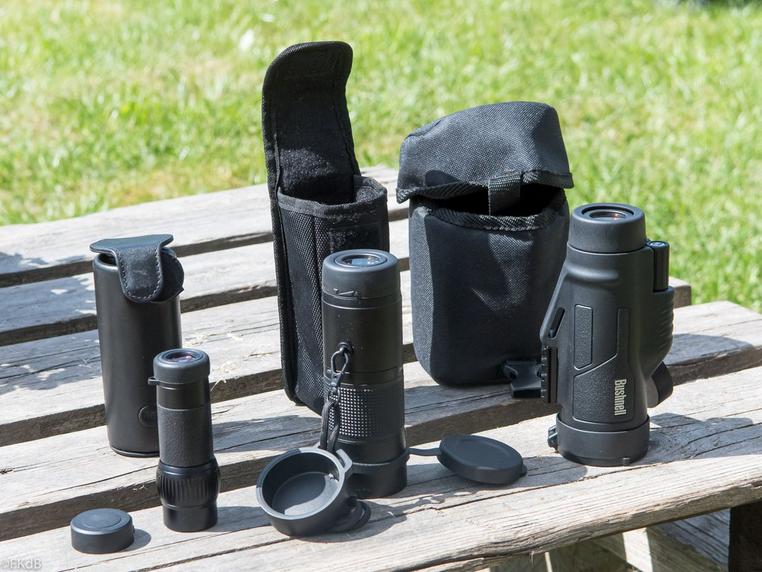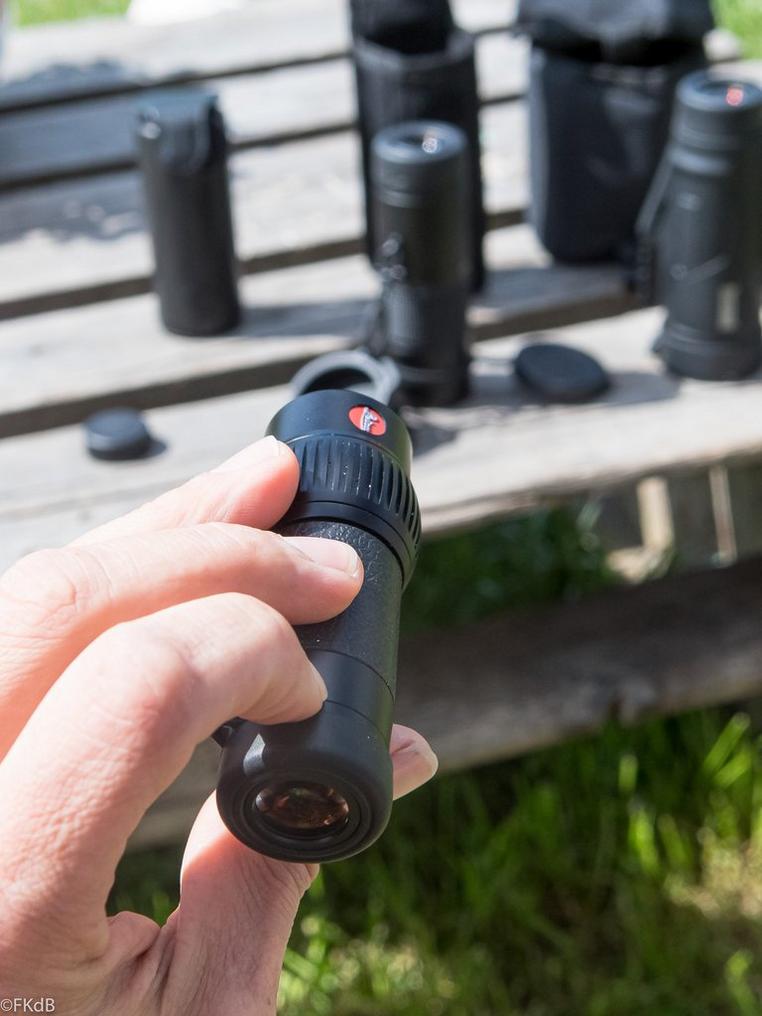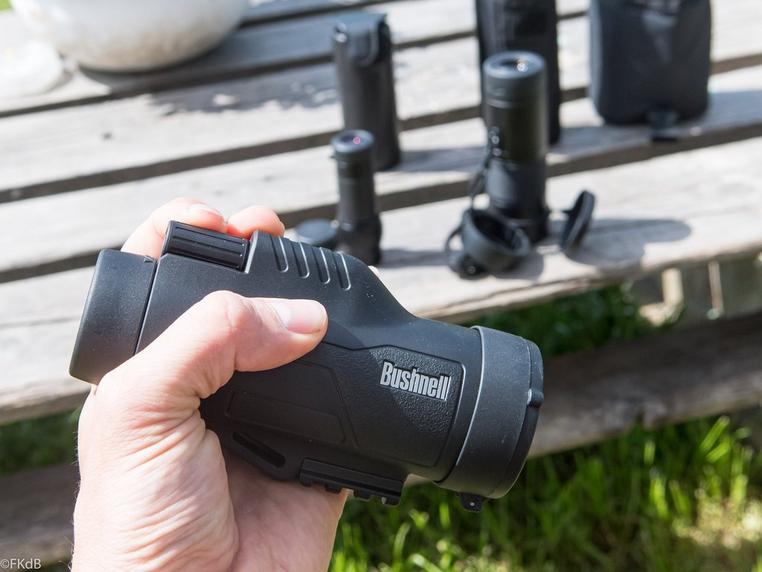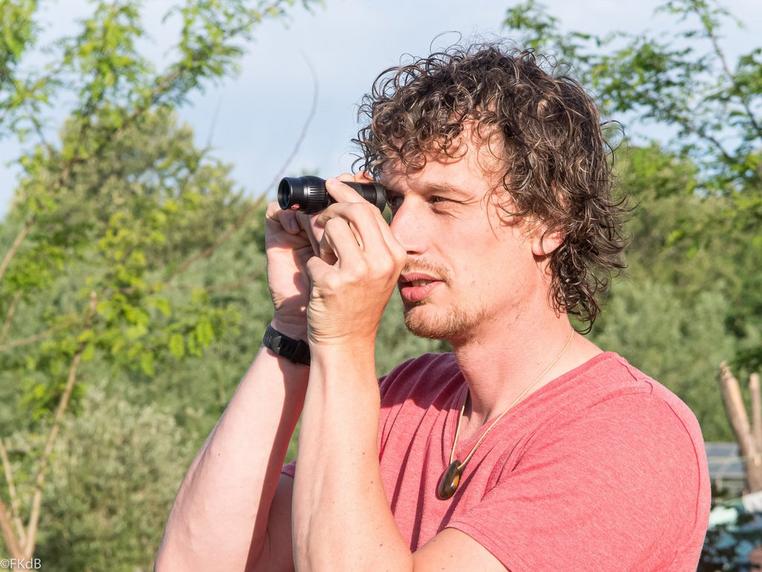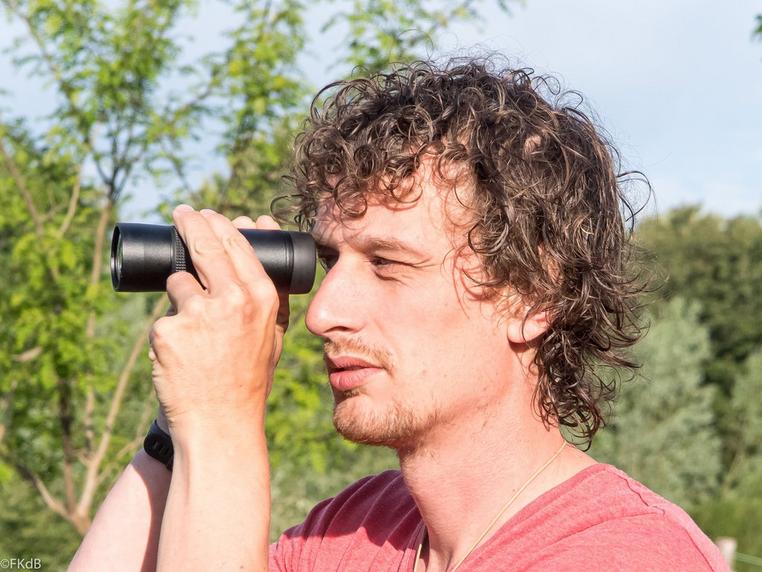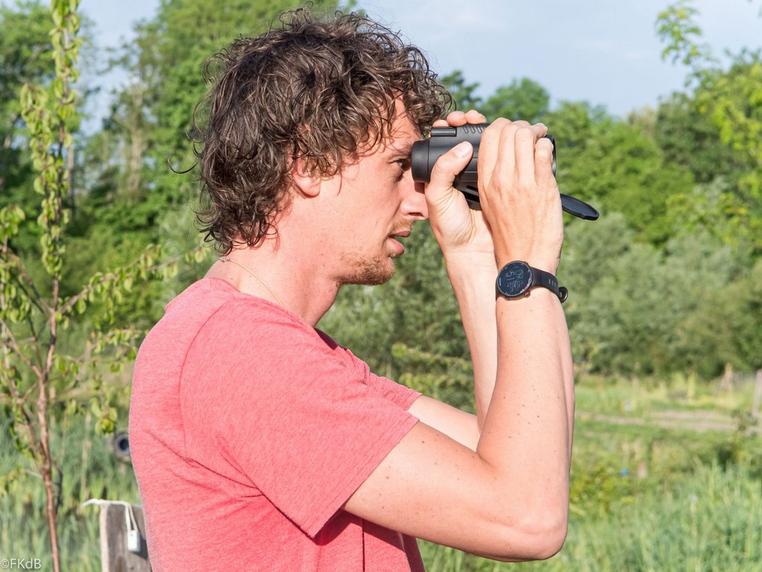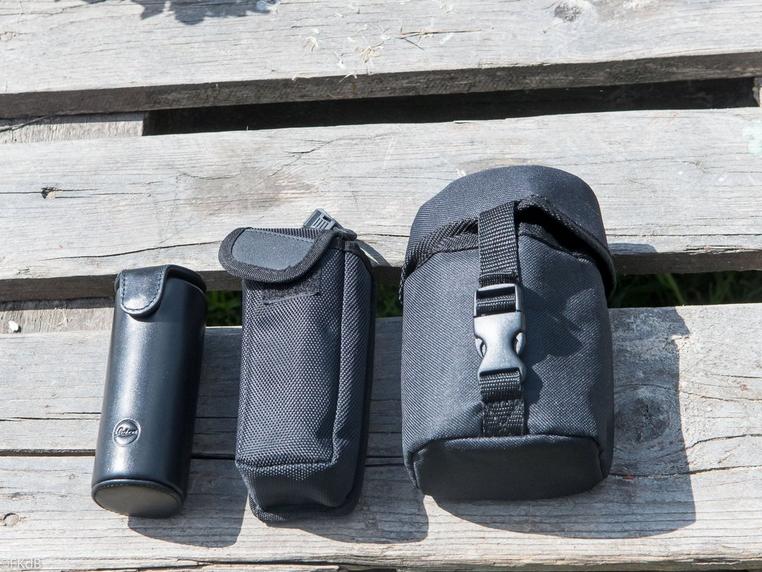Monoculars compared: Leica MONOVID 8x20, Bushnell Legend ED 10x42 & Eden HD 10x42
I can't remember ever looking through a monocular before this review, other than telescopes. A monocular has one lens and ocular (eyepiece), rather than two, making it much lighter and more compact than traditional binoculars. This also means that you look through the monocular with one eye. From hearsay, monos are mainly used by sailors and hunters, neither of which categories I belong to, but for people who find binoculars too large but still want the option of seeing something (be it the landscape, wildlife, a distant subject, etc) a little closer, a monocular is theoretically ideal due to its compact size. In the field, I've actually never seen a birdwatcher with a monocular, so I'm clearly not the primary target audience for this type of viewing instrument. I was therefore very curious whether a monocular could be used for birdwatching.
First impressions and accessories
The Leica MONOVID 8x20 is by far the most impressive when it comes out of the packaging. Remarkably small, beautiful leather case or sheath with an ingenious closure, and there's an extra conversion lens that turns the viewer into a magnifying glass, hidden in the lid of the case. I was impressed when it came out of the box. The monocular itself is sophisticated, and it looks good. It's a bit too small to say it's truly comfortable in hand, because when I look through it, I can really only hold it between a couple of fingers. It's easy to stash it in a trouser or jacket pocket. Including the case, it's no bigger and is even lighter than the other 2 monos without their cases.
So the Eden HD 10x42 is quite large compared to the Leica, but that's only relative. It feels smaller than half a pair of binoculars. The metal housing makes it look robust, no frills, and it fits comfortably in hand. Not too heavy and easy to tuck into a backpack, or maybe your jacket. It's a little on the large side for a trouser pocket, but it's certainly still possible. The focusing mechanism is a ring in the centre of the viewer and seems easy to use. The included case is fairly basic, but serves its purpose: quickly storing the monocular.
The Bushnell Legend ED 10x42 is about the same size as the Eden, but because the focusing mechanism, belt clip and tripod connection are on the outside of the viewer, it is no longer round and looks a bit clunkier, or more “tactical” to give it a positive spin. The connection to put it on a tripod has no added value for me personally because then you also have to carry around a tripod. The supplied case is very large and seems a bit oversized. There's also a clip on the viewer itself that can be attached to a belt. The cap for the front lens is hard plastic and is fixed to the viewer with a folding mechanism, which is actually pretty practical.
Use
Looking through traditional binoculars requires less effort because you look with two eyes at the same time. When using my telescope, I often squeeze my other eye shut, which eventually feels cramped. I did this with the monoculars too, until someone gave me the tip to just keep my other eye open. This takes some getting used to at first, but eventually it worked surprisingly well. You follow the subject with one eye, and when you have it in frame, switch to the other eye to get a closer view through the mono. When I have the subject in frame, I do often close the other eye to get a slightly clearer image. The Leica has a small front lens (20mm), so I personally find the image too small. In addition, its small size makes it a bit difficult to hold steady and therefore not really usable for flying birds or birds hidden in a tree. This is of course less of a problem for non-moving subjects. Focusing was a bit jerky, but this could get smoother with more use - I didn't use it long enough for that.
The Eden and the Bushnell both have a larger front lens (42mm), which makes the image look a lot more still. The advantage of the shape and positioning of the Bushnell's focusing mechanism is that you automatically hold it very stably. With the Eden you have to turn a ring in the monocular, which means movement of the viewer is actually unavoidable, and it takes a little more effort to follow a moving subject while focusing. With some practice this does work fine because of the large image.
Because you focus the Bushnell via a wheel on the outside of the viewer, it's the only monocular that you could potentially operate with one hand. In practice, I always used 2 hands because you get a better hold and it provides more stability and therefore a calmer image. The eyepiece cap for the Bushnell is made from hard plastic and it just doesn't fit very well, causing some impressions in the rubber ring of the eyepiece. Which is a shame. The soft rubber cap on the Eden does fit and would be a better option. I always find the standard rubber caps on the front lenses of viewers quite irritating and I often leave them at home, but I actually liked the Bushnell's cover that protects the front lens. You can easily open and close it, which gives just that extra bit of protection. A plus point, especially since I carried the oculars in my pocket.
Optical quality
In terms of optical performance, the Leica is clearly superior to the other 2 monoculars. Very sharp, beautiful colours, relatively a lot of light and very good edge sharpness. In short, an image you can expect from a viewer in the top segment. The conversion lens that turns the mono into a magnifying glass (hidden in the cover of the case) is also a very nice extra. The detail you can see with it is fantastic. After a little practice I managed to take photos with my mobile through this magnifier, so you can take nice macro photos with lots of detail.
The Bushnell and the Eden have a 42mm front lens and therefore a much larger image, so the image looks calmer. Sharpness and quality are good on both. Sufficient light comes through and the colours are beautifully deep and rich in contrast. The edge sharpness isn't as good as the Leica's, but in normal use this isn't actually noticeable due to the large image. In direct comparison, the Bushnell comes out a little better, I think mainly because of the depth of the colours that have a little more contrast, but they are both very good.
Conclusion
All in all, I'm pleasantly surprised by both the “monocular” concept and the specific monoculars from this test. If I go out specifically to look at birds, I will always go for regular binoculars, possibly even in combination with a telescope. But for trips where I don't want to carry around binoculars, but still want to have something at hand so I can quickly view something, a monocular is ideal. You can easily carry it with you, and with the Bushnell and the Eden, it's entirely possible to see and observe birds. The detail was certainly good enough to recognize birds, and you can still pick out flying birds and get a good picture with a little practice. While the Leica is optically the best and is a very beautiful viewer, it's less suitable for birdwatching due to the small image. Personally I would go for the Eden or the Bushnell - the Eden is very handy and offers a good image, and the Bushnell is just a little easier to use with a slightly better image.
Leica MONOVID 8x20
advantages
- looks amazing
- accessories (included conversion lens!)
- very compact
- sharp, clear and high-contrast image with good edge sharpness
disadvantages
- Hard to hold due to its small size
- Focusing isn't very smooth
- Small image and difficulty to hold make it less suitable for flying birds or birds hidden in a tree.
- Still a very good price
Bushnell Legend ED 10x42
advantages:
- Nice clear image with deep colours
- Easy to focus and handle with one hand
- Thanks to the focusing mechanism, you can immediately hold the viewer stable for the most calm, still image.
- folding protective front lens cap
disadvantages:
- Protective eyepiece cap. Because it's hard plastic, it leaves dents in the rubber of the eyepiece.
- Slightly less edge sharpness
- Relatively less compact than the other two monoculars
Eden HD 10x42
advantages
- Looks sleek and robust
- Handy size
- Nice clear image
- Very good value for money
disadvantages
- Focusing mechanism in the viewer provides a slightly less stable image while focusing. Takes some practice to track a moving subject while focusing.
- Edge sharpness isn't optimal
- Two hands needed to focus
Folkert de Boer
Folkert is a familiar face in the Dutch birdwatching world. He is closely involved with Batumi Raptor Count, leads birdwatching excursions for organizations including BirdingBreaks and has worked for Waarneming.nl for a long time. Folkert was interested in birds from a young age, and you'll hardly ever see him without binoculars. He says: “Birdwatching is my passion. You look at your surroundings more closely and start to appreciate nature even more. My father used to bring a pair of binoculars whenever we went on holiday, and that's how I got hooked as well. I am often in Georgia for Batumi Raptor Count, where millions of birds of prey fly over every autumn. They migrate from their breeding grounds in the far north to the south to overwinter. By counting them, we get an idea of how the birds of prey are doing.”

